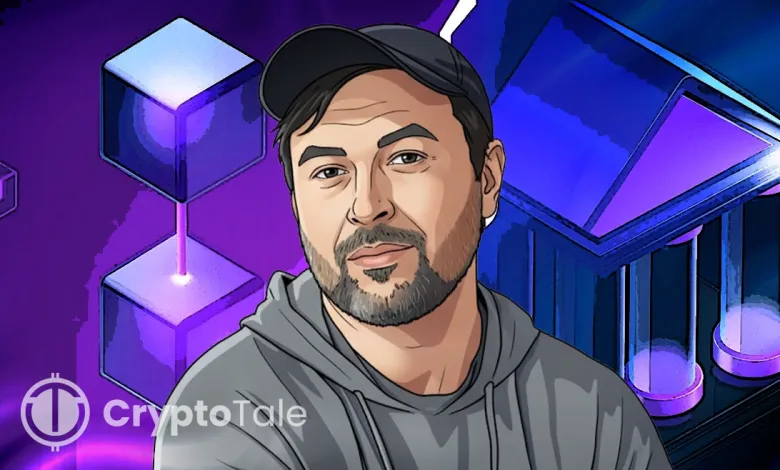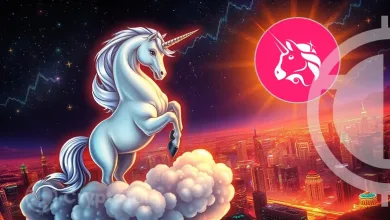Solana Co-Founder Says DeFi Prevents TradFi Leverage Traps

- DeFi’s open systems expose leverage positions, making markets more transparent and secure.
- Yakovenko believes on-chain accountability offers a safer framework for global finance.
- Solana’s network supports transparency that limits systemic failures seen in TradFi.
Solana co-founder Anatoly Yakovenko has sparked renewed discussion over decentralized finance (DeFi) and its ability to manage financial risk more transparently than traditional finance (TradFi). In a recent exchange on X with Bankless co-founder Ryan Sean Adams, Yakovenko said, “Excluding hacks, I think DeFi, even with multisigs, prevents a lot of the bad leverage rugs that we saw in TradFi.”
His comments arrive as Solana (SOL) trades at $155.47, down 0.96% in the past 24 hours, with a 24-hour trading volume of $11.23 billion, according to CoinMarketCap during press time.
DeFi’s Transparent Structure vs. TradFi’s Hidden Leverage
Yakovenko’s statement points to a growing belief that DeFi’s open, on-chain architecture provides greater safety against systemic collapses. In TradFi, hidden leverage and opaque credit systems have historically led to major crises, from the 2008 global recession to recent bank failures. DeFi, by contrast, uses smart contracts that record every loan, collateral, and transaction on public blockchains, creating real-time verifiability for users and regulators.
The structural separation is substantiated by academic publications like the one appearing in 2023. The authors of the study indicated that DeFi eliminated the most important risks in traditional finance regimes, such as moral hazard and too much intermediary involvement, by applying strict algorithmic rules instead of relying on human judgment.
A forthcoming 2025 review further comments that while DeFi is exposed to its own set of risks, at the same time, its risk exposure is transparent and limited by the algorithm, thereby preventing the hidden accumulation of leverage.
Yakovenko’s position aligns with these results. He asserts that DeFi’s overcollateralization and automatic liquidation can prevent the creation of leverage cycles, which traditionally result in market collapses. Each collateralized position is not only visible but also controlled by the code, which eliminates the opacity that allowed the failure of TradFi.
On-Chain Risk Management and Governance Frameworks
According to Crypto.com, DeFi systems promote built-in risk management features. The various lending platforms require a guarantee from borrowers that is higher than the amount of the loan before lending it to them. These three measures together form a never-ending cycle of risk balancing, which is contrary to the way that traditional finance relies on the disclosures of the institutions and the audits by the regulators.
Transactions executed on Solana’s blockchain are fast and cost-effective. The efficiency of the network supports the statement made by Yakovenko that transparency and speed can be used as tools to lower the risks associated with the entire system.
The governments of DeFi are held using multisignature wallets, time locks, and decentralized voting, which means that the community has a direct say in how the protocols are changed. This kind of oversight by the community takes away control of a single entity; thus, the possibility of insider manipulation is reduced.
Related: Solana Co-Founder Slams Meme Coins, NFTs as ‘Digital Slop’”
While some point out that the multisig setup, as well as the oracles, introduce new risk factors, Yakovenko argues that these instruments do not reduce but rather increase the accountability compared with centralized systems, which are at risk of being secretly leveraged.
Risks Remain but Structural Differences Persist
DeFi has advantages, but at the same time, it is not immune to failure. A 2025 study confirmed the presence of vulnerabilities in smart contracts and governance systems; thus, the risk of being exploited through protocols that can be composed still exists. Meanwhile, oracle errors and attacks on governance persist, sometimes contributing to instability.
Nevertheless, the researchers agree that risks are present, but they differ from those of TradFi. In the case of DeFi, incidents are loud and instantaneous, thus giving market players a chance to act much quicker.
On the other hand, in traditional markets, leverage is often hidden until it is too late to manage the situation. This difference forms the basis of Yakovenko’s viewpoint—DeFi’s open setup provides the transparency that traditional systems lack.




